

STEP ONE
PLAN YOUR JOURNEY
Use the LincsBus website or the Citymapper app to plan your trip:
Enter the key details
Type in your starting location, destination, and preferred date and time to find the best route for your journey.
View available routes, operators, and live times
You’ll see which bus services are available, who operates them, and when they’re due to arrive. If you’re planning in advance it’s best to check the schedule again before you travel in case of any changes.
Compare journey options
Citymapper will show you walking distances to stops, transfer points, and estimated journey times so you can choose the most convenient route.
Explore accessibility support
In Lincolnshire, Independent Travel Training is available to help disabled passengers build confidence using the bus. Find out more here.
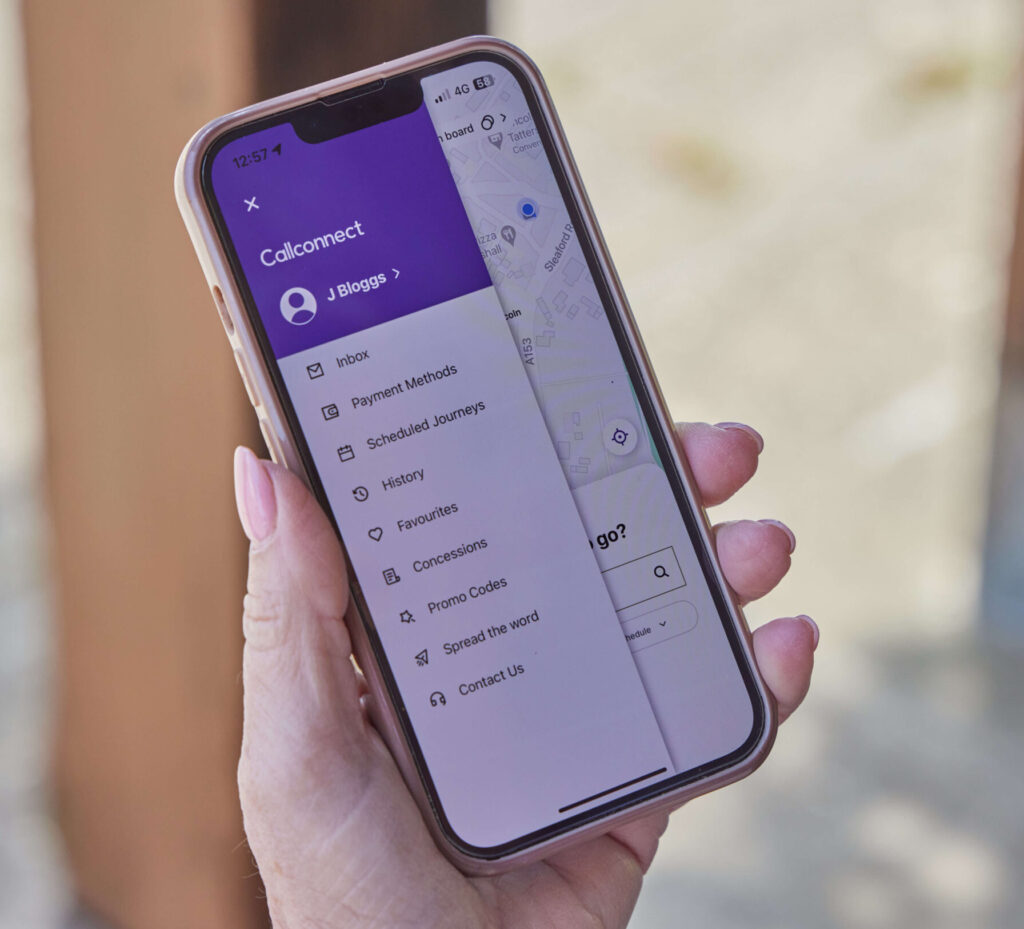
STEP ONE
PLAN YOUR JOURNEY

Use the LincsBus website or the Citymapper app to plan your trip:
Enter the key details
Type in your starting location, destination, and preferred date and time to find the best route for your journey.
View available routes, operators, and live times
You’ll see which bus services are available, who operates them, and when they’re due to arrive. If you’re planning in advance it’s best to check the schedule again before you travel in case of any changes.
Compare journey options
Citymapper will show you walking distances to stops, transfer points, and estimated journey times so you can choose the most convenient route.
Explore accessibility support
In Lincolnshire, Independent Travel Training is available to help disabled passengers build confidence using the bus. Find out more here
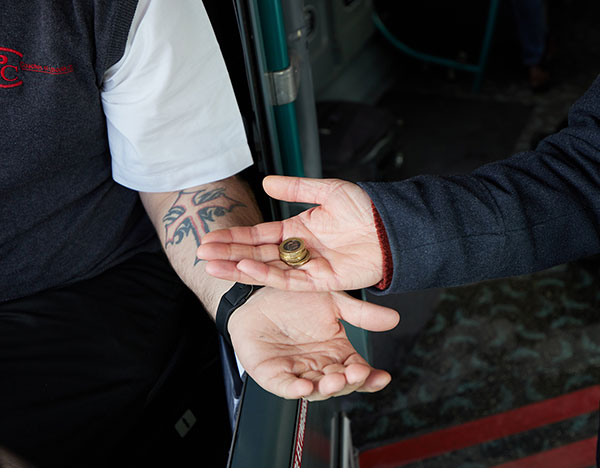
STEP TWO
KNOW YOUR BUS FARES
Below are the different types of bus fares available in Lincolnshire:
Standard fare cap
Most single journeys cost £3 or less, thanks to the fare cap extended until March 2027.
Callconnect fares
£1, £2, or £3 depending on distance. Learn more here.
Concessionary bus pass
Free travel for eligible older and disabled passengers at any time in Lincolnshire. Find out more here.
STEP TWO
KNOW YOUR BUS FARES

Below are the different types of bus fares available in Lincolnshire:
Standard fare cap
Most single journeys cost £3 or less, thanks to the fare cap extended until March 2027.
Callconnect fares
£1, £2, or £3 depending on distance. Learn more here.
Concessionary bus pass
Free travel for eligible older and disabled passengers at any time in Lincolnshire. Find out more here.
STEP THREE
WAITING AT THE BUS STOP
Please arrive at the bus stop or station at least 5 minutes before the scheduled departure time to ensure you don’t miss your bus.
Most towns and villages have clearly marked bus stops with full timetables so you can double-check your bus time.
Tracking your bus
You can scan the QR code at the bus stop to check live arrival times – view our guide here.
Some bus stops across Lincolnshire now include real-time displays which tell you when the next bus will arrive – learn how to use them here.
The Citymapper app also offers live bus tracking and real-time updates to help you stay on schedule.
If you have a visual impairment consider using journey planning apps with voice guidance — they can help confirm your location and provide real-time updates.
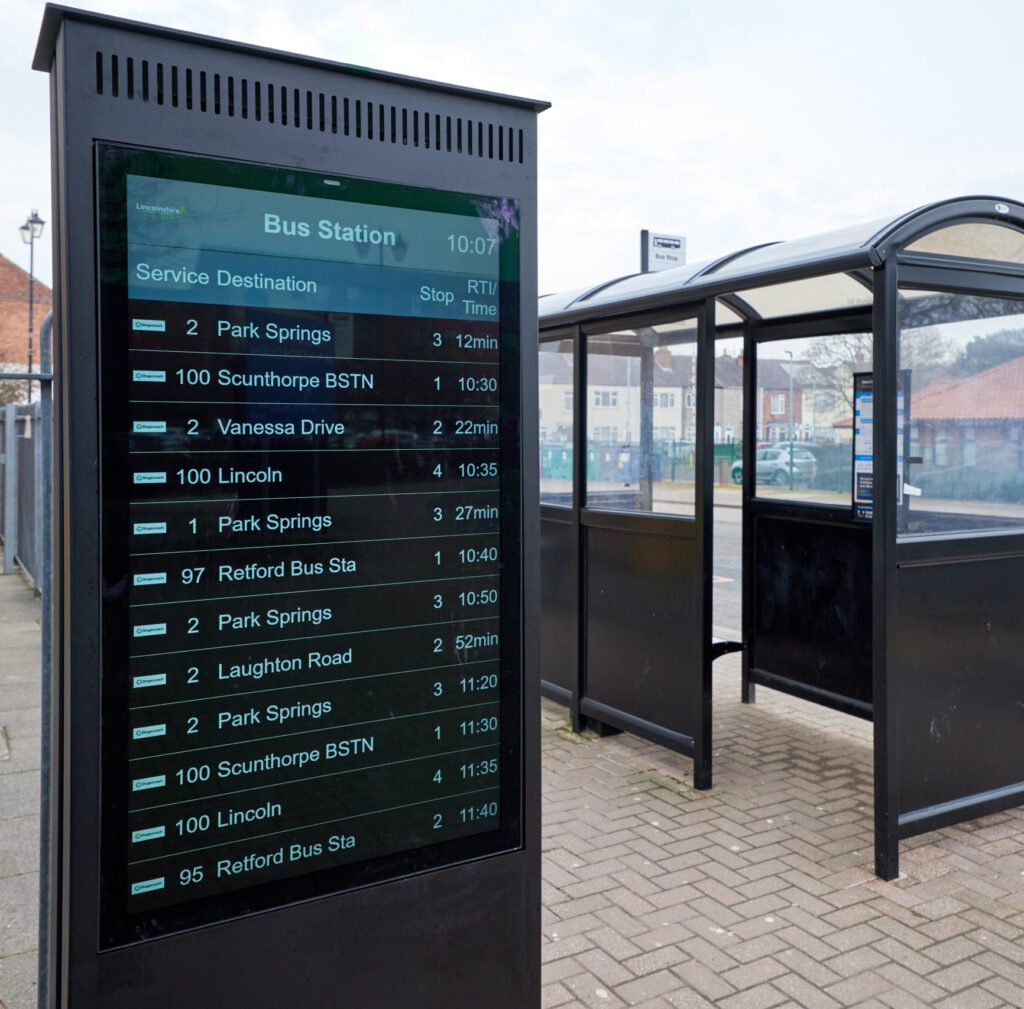
STEP THREE
WAITING AT THE BUS STOP

Please arrive at the bus stop or station at least 5 minutes before the scheduled departure time to ensure you don’t miss your bus.
Most towns and villages have clearly marked bus stops with full timetables so you can double-check your bus time.
Tracking your bus
You can scan the QR code at the bus stop to check live arrival times – view our guide here.
Some bus stops across Lincolnshire now include real-time displays which tells you when the next bus will arrive – learn how to use them here.
The Citymapper app also offers live bus tracking and real-time updates to help you stay on schedule.
If you have a visual impairment, consider using journey planning apps with voice guidance — they can help confirm your location and provide real-time updates.
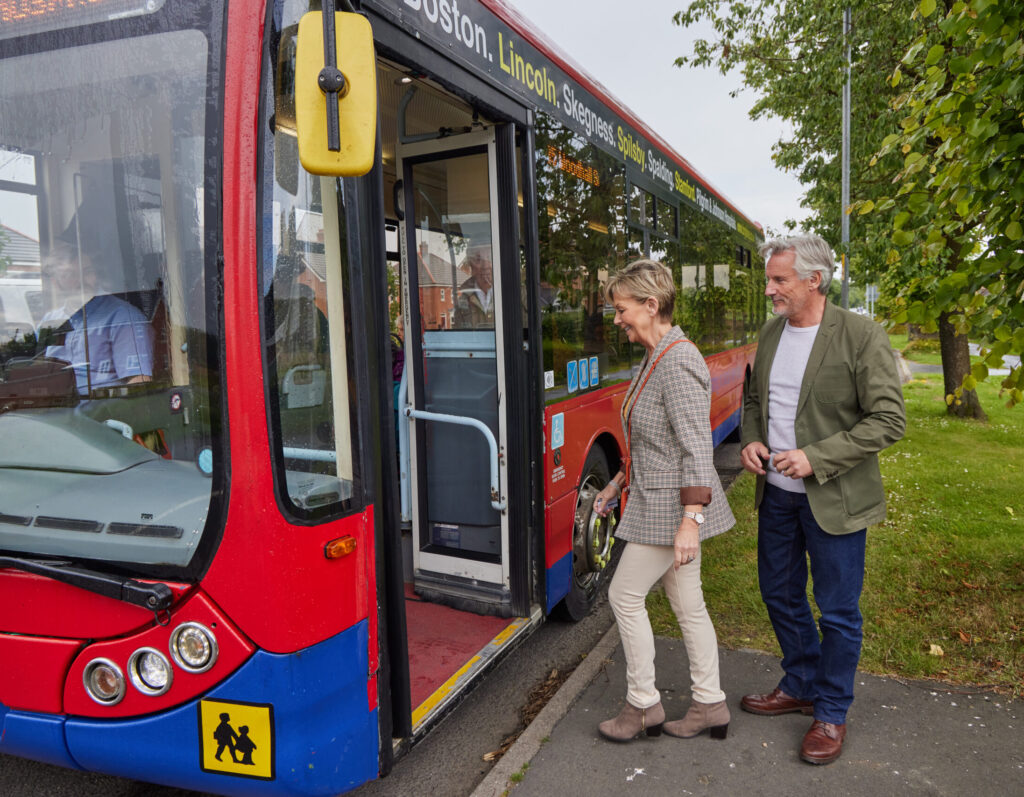
STEP FOUR
BOARDING THE BUS
Signal the driver as the bus approaches – especially if buses to multiple destinations serve the same stop.
Tip: If it is dark out, you can use the light from your phone to ensure you are seen by the driver.
Please wait for passengers on board to exit the bus before getting on.
Buses are fitted with ramps and can lower themselves at the stop to make boarding easier for wheelchair users and passengers with limited mobility.
Drivers can assist with boarding — just signal if you need help.
Have your payment or pass ready to ensure boarding is quick and easy.
STEP FOUR
BOARDING THE BUS

Signal the driver as the bus approaches – especially if buses to multiple destinations serve the same stop.
Tip: If it is dark out, you can use the light from your phone to ensure you are seen by the driver.
Please wait for passengers on board to exit the bus before getting on.
Buses are fitted with ramps and can lower themselves at the stop to make boarding easier for wheelchair users and passengers with limited mobility.
Drivers can assist with boarding — just signal if you need help.
Have your payment or pass ready to ensure boarding is quick and easy.
STEP FIVE
BUYING YOUR BUS TICKET
If you’re planning to travel on a Stagecoach bus route, you can buy your ticket in advance using the Stagecoach Bus App.
OR
Tell the bus driver where you want to go and whether it is a single or return ticket.
You can pay the driver using cash or use your concessionary bus pass for free travel. Most bus services in Lincolnshire also accept contactless card payments.
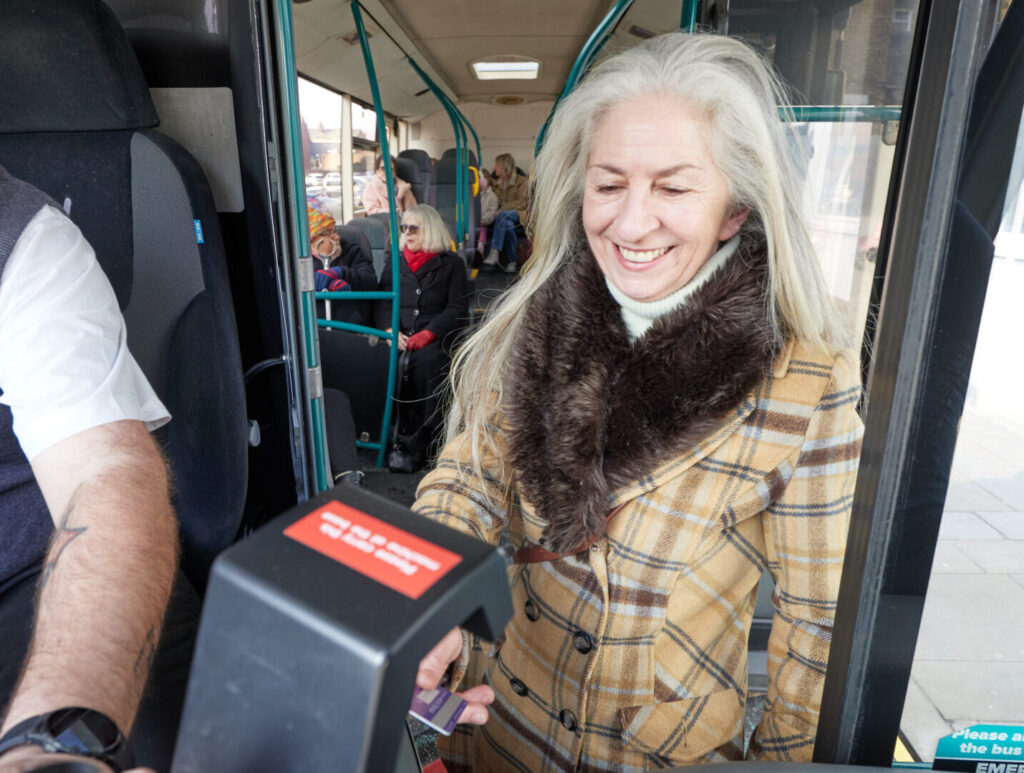
STEP SIX
SITTING ON THE BUS
Take a seat if available. If it’s busy or crowded you can stand towards the front of the bus holding a pole or strap.
Here are a few tips to make your journey comfortable for you and others:
-
DO respect priority seating for older passengers, disabled passengers, and those with young children. These seats are usually located at the front of the bus.
-
DO keep your belongings close to avoid blocking aisles or seats.
-
DO wear headphones when listening to music or videos – keep the volume low.
-
DO drink only from sealed containers (e.g., bottles with lids).
-
DO keep children supervised and help them stay seated safely.
-
DON'T put your feet on the seat as it’s unhygienic and inconsiderate to other passengers who may need to sit there.
-
DON'T vape or smoke on board.
-
DON'T block the aisle or place bags on seats.
-
DON'T distract the driver while the bus is moving.
-
DON'T eat messy or strong-smelling food.
-
DON'T leave litter behind – use bins or take rubbish with you.
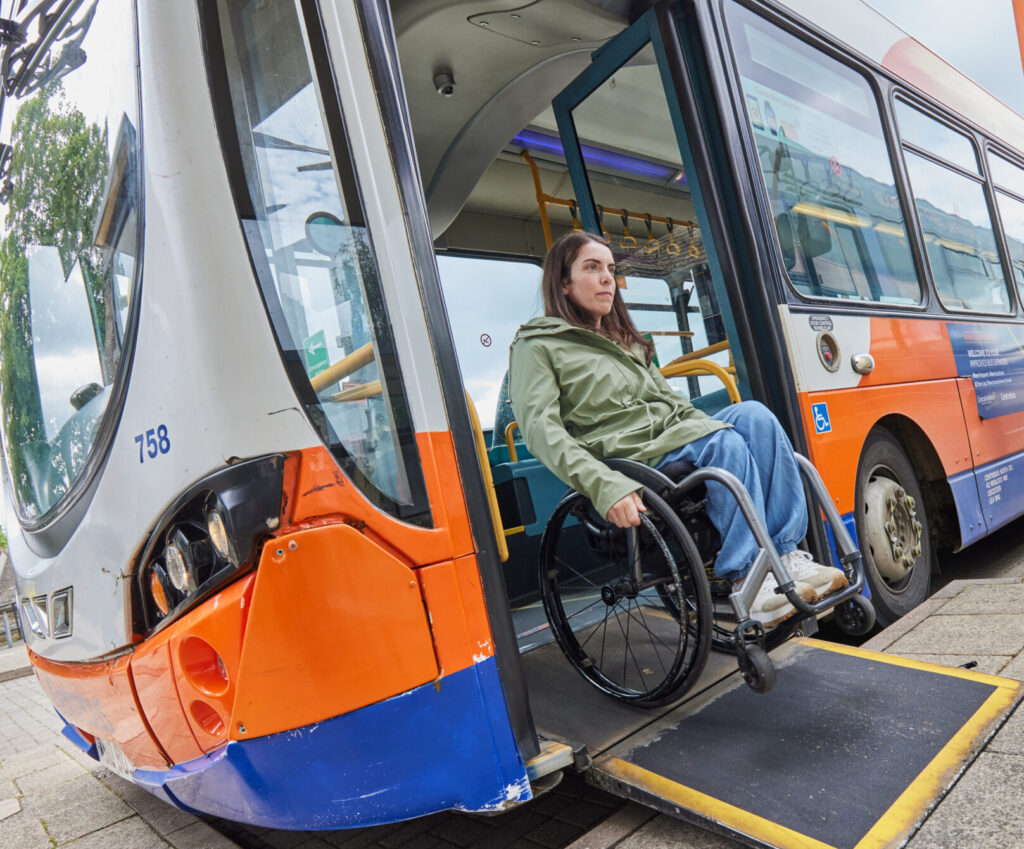
STEP SEVEN
GETTING OFF THE BUS
Most seats have a bell button within easy reach, just press it once to let the driver know you’d like to get off at the next stop. If the ‘Stopping’ light is already lit, no need to press again.
Stay seated until the bus comes to a complete stop to avoid injury.
Before leaving, make sure you’ve taken everything with you.
Many passengers like to thank the driver as they get off — it’s a simple way to show appreciation.
Please take care when stepping off the bus.
If you have accessibility needs, the driver can assist you when getting off the bus — whether that’s deploying the ramp, lowering the bus to the kerb, or offering guidance if you need help navigating the exit.
STEP SEVEN
GETTING OFF THE BUS

Most seats have a bell button within easy reach—just press it once to let the driver know you’d like to get off at the next stop. If the ‘Stopping’ light is already lit, no need to press again.
Stay seated until the bus comes to a complete stop to avoid injury.
Before leaving, make sure you’ve taken everything with you.
Many passengers like to thank the driver as they get off — it’s a simple way to show appreciation.
Please take care when stepping off the bus.
If you have accessibility needs, the driver can assist you when getting off the bus — whether that’s deploying the ramp, lowering the bus to the kerb, or offering guidance if you need help navigating the exit.
Frequently Asked Questions
This section helps answer some of the most frequently asked question about using Lincolnshire’s bus services.
If you notice damage to a bus stop or shelter—such as broken glass, vandalism, or missing signage, you can report it via FixMyStreet. Just enter the location and a brief description of the issue to help get it resolved quickly.
Lost property is handled by the bus operator. Visit the operator’s website or contact their customer service team directly with details of the item, route, and time of travel. They’ll let you know if it’s been found and how to retrieve it.
Most operators allow folded bikes on board, provided they don’t obstruct aisles or take up too much space. Non-folding bikes are generally not permitted due to space and safety concerns. Always check with the operator before travelling.
Yes—buses usually have a designated space for buggies and pushchairs. If the space is already occupied, you may be asked to fold it or wait for the next bus. Priority is given to wheelchair users, so please be prepared to make space if needed.
Sometimes delays happen due to traffic or operational issues. Use live tracking apps or contact the operator for updates. If you’re unsure, check nearby stops or alternative routes.
Yes, you can bring bags and small items of luggage, but try to keep them out of the aisle and off seats.
Most modern buses are low-floor and have ramps for wheelchair access. Priority spaces are available for wheelchair users and those with mobility aids. If you need assistance, the driver will help you board safely.
This depends on the child’s age and the operator’s policy. Some operators allow older children to travel independently, while younger children may need to be accompanied. Check with the operator for specific guidance.
If you feel unsafe or see something concerning, alert the driver if it’s safe to do so. You can also report incidents to the bus operator or, in serious cases, contact the police. Many buses are fitted with CCTV for added security.
If the bus is full, the driver may not be able to allow more passengers on board for safety reasons. You’ll need to wait for the next service or consider alternative routes.
Many operators offer service alerts via their websites, social media, or mobile apps. Signing up for notifications can help you stay informed about delays, diversions, or cancellations.
Yes, most operators welcome feedback via their websites, social media, or customer service lines. Some buses will also have a QR code on board for you to easily provide feedback. Whether it’s a compliment, complaint, or suggestion, sharing your experience helps improve services.
